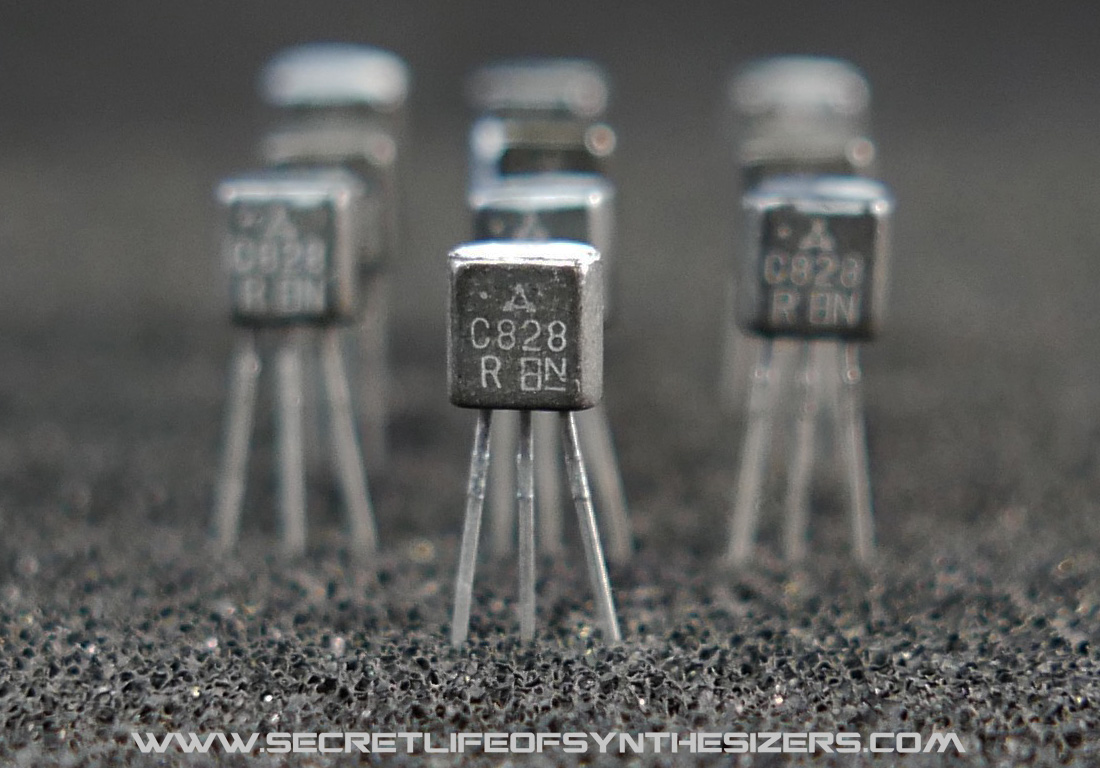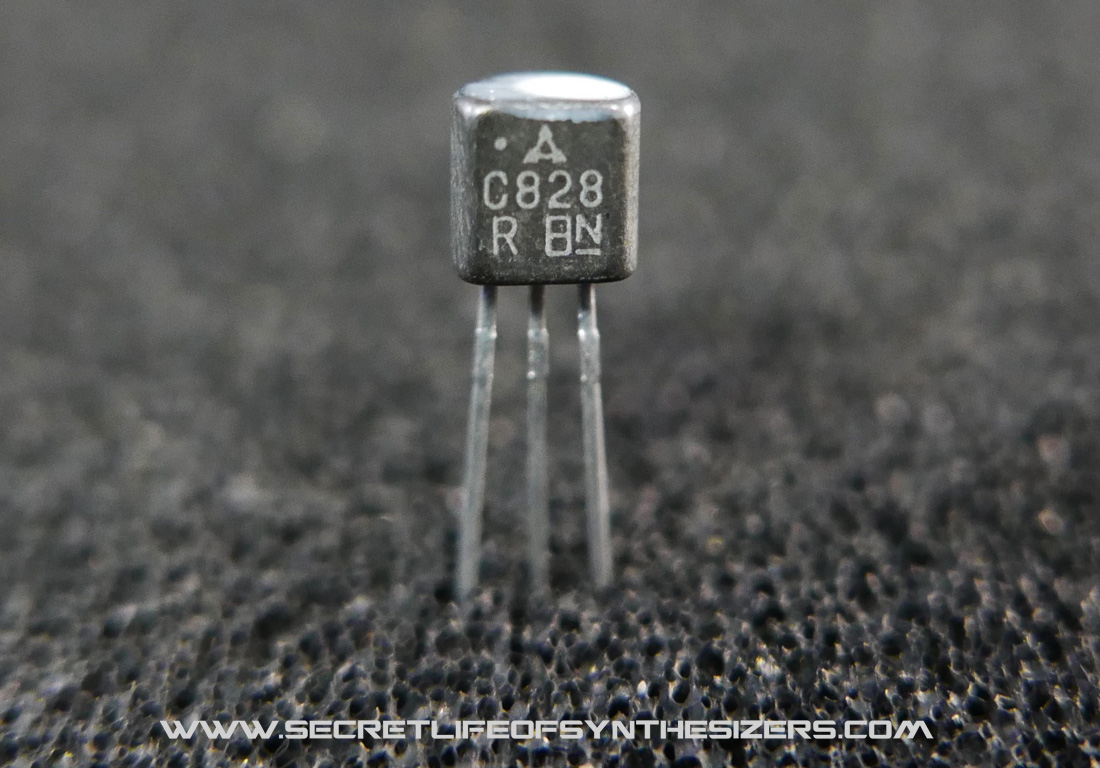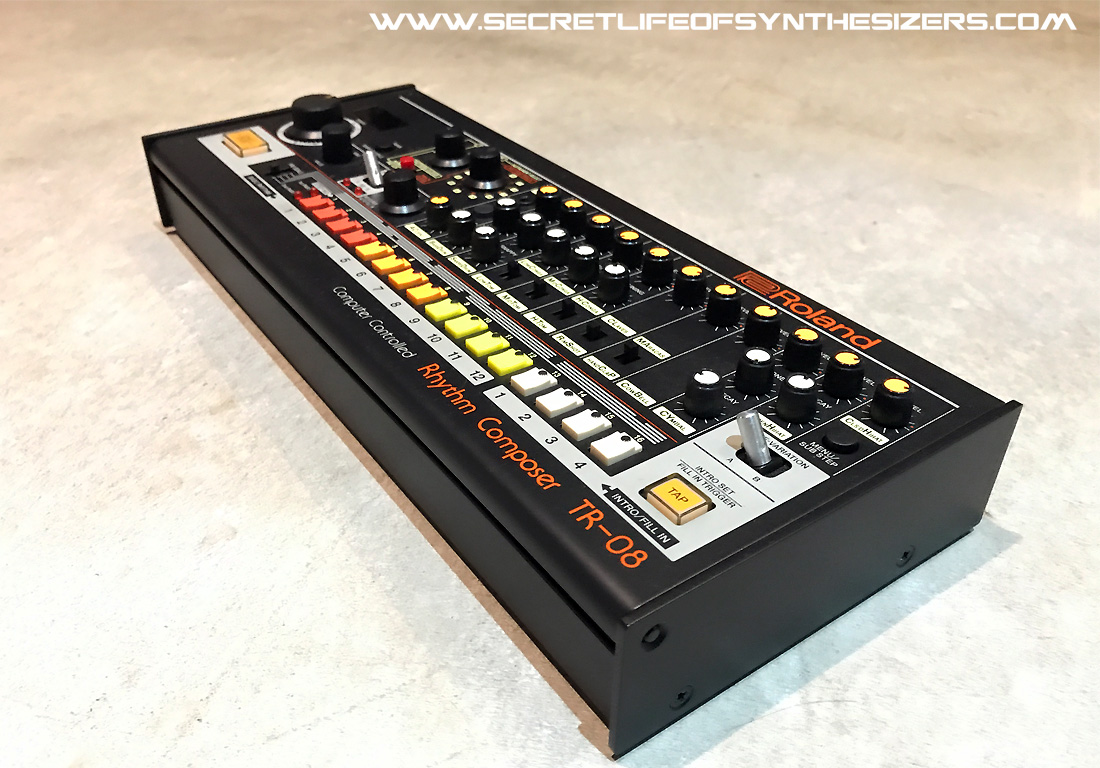Mysterious heart of the drum machine Roland TR-808

The story of a special transistor located in the heart of the legendary drum machine
In the 1970s and 80s, in the golden era of synthesizer design, several manufacturers stood out for their consistently high quality products and excellent electronic circuits. In many cases, the situation was fueled by Japanese companies, their tools were the result of the excellent work of engineers, and from both the inside and the outside - high-quality enclosures, printed circuit boards and an excellent selection of components made it possible to create reliable electronics. Roland was famous for its synthesizers and other instruments, and one of the most influential and famous of them was the TR-808 drum machine . Its influence on modern music and culture of the 1980s was, to put it mildly, unprecedented. It has existed for almost 40 years, many connoisseurs hunt for it, musicians love to use it, and it rarely appears on the market for second-hand instruments.

Original TR-808 with some changes
The TR-808 has an interesting story, and no wonder, because the life course of Roland’s founder, Ikutaro Kakehashi, is incredible. The beginning of his life is marked by amazing creative impulses, perseverance and desire for the goal; he faced and overcame such obstacles that would make most people give up. His story is worth reading as an example of indomitable perseverance and fortitude.
')
Kakahasi was an excellent development engineer, he created early Roland products, while simultaneously developing and managing a company, and traveling the world promoting its tools. Tools based on solid-state electronics were rare when he first founded Acetone, and then Roland. Then, by the early 1980s, component manufacturing processes had already developed quite well, but in each batch of semiconductor elements, integrated circuits and transistors, there was a fairly large percentage of rejection - perhaps because of the uneven quality of the substrate materials, temperature fluctuations, and so on. Manufacturers checked each batch, marked up the elements depending on their electrical characteristics, and labeled them accordingly before shipment. In each batch several transistors of different types could appear, depending on the quality of their work. Some were so different from each other that they were simply rejected. They could work quite well, just do not fit into the characteristics of any of the items of the nomenclature. And here begins the strange chapter in the history of the Roland TR-808 Rhythm Composer.
Rejected transistor in the center of the Roland TR-808

Some "old new" transistors from the original batch of the 1970s
The photo above shows special transistors. The part number is from the common transistor 2SC828-R. They are no longer produced, but they are still sold from many suppliers of electronics, and cost no more than 30 cents apiece. These are simple npn general purpose transistors used in audio equipment and switches. “R” means dc gain rating. They were produced by several companies, including Toshiba and Panasonic. Technically speaking, the symbols printed on these transistors are incorrect, they actually do not belong to the 2SC828 series - these are, in fact, rejected transistors, on which the part number 2SC828-R is still printed, but which have not been tested in production.
This article deals with a small batch of transistors, which were rejected on the basis of “inconsistency specifications”, and then sold to Roland. A smear of paint on the top of the transistor marks their uniqueness and extreme rarity. The paint was applied at the Roland factory in the late 1970s to note that these transistors have unique characteristics and can be used as a source of noise in the new TR-808 Rhythm Composer drum machine.
How exactly Kakehashi came across these parts is unknown, although he should have had connections with the manufacturers of parts used by Acetone and Roland. He tells a part of this story on his own, at the end of the beautiful 2015 documentary " 808 ". There, he says that in the production of a batch of 10,000 transistors, only 2-3 percent could be “defective”, and he acquired these rejected parts, which became vital for the “sharp” sound of the TR-808. He said that with the improvement of production processes, he was faced with the absence of such defective transistors, which made it impossible to produce new TR-808. That's how important this transistor was for creating a unique TR-808 sound. After 12,000 TR-808 units were made, production closed. These transistors were actively discussed after the release of the documentary, and they gathered a lot of folklore, so we decided that we could fill in some details of the story and show you their close-up photos.



Is it possible to clone TR-808?
So far, it is impossible to create a perfect analog copy of the Roland TR-808 without such transistors. Some companies made clones, some enthusiasts tried to make their own version of the instrument using standard 2SC828, but found that they didn’t sound like that at all. This is because there is no other transistor with exactly the same spectral noise profile and output level as the 2SC828-RNZ, released in the 1970s, and used in the production of the TR-808. If the TR-808 fails the transistor, it can be replaced only with the same transistor from the original part, or it will not sound the same as before. When Roland ran out of these transistors, the company had to stop producing the instrument, because the noise characteristics were critical to the sound of snare drums, claps, and white noise, which were then filtered into pink noise and used for other instruments. If you set the standard 2SC828-R in TR-808 instead of the favorites, then the sound changes completely. As I already mentioned, these transistors, strictly speaking, cannot be called 2SC828, otherwise they would not be rejected. Fortunately, transistors are not prone to failure, so if you have an 808th, you don't have to worry about it.
Note: at the end of the article will be given an addition, where it is written that in fact an alternative to the transistor was found.
What is a “noise transistor”?
People familiar with analog synthesizers know that these instruments use not only oscillators, but also noise generators as sound sources. Depending on the type of sound you want, you can use “white” or “pink” noise generators. Pink noise is usually white noise, passed through a filter and then amplified. Also, the noise generator in the synthesizer is a good source of random voltage for the sample and hold device . Some synthesizers use a digital noise source, but most use the semiconductor junction feature that occurs when they enter the breakdown region due to reverse bias. If you connect the diode back to front and limit the current, raising the voltage to the level of the diode breakdown, it produces noise. A bipolar transistor is even better, and if you look at the circuit from the TR-808 manual, you can see that only two of the three contacts are connected to the Q35 transistor. This transition is the source of white noise. The characteristic quiet noise is amplified and delivered to the drums and claps, and then fed to the filter to get pink noise for tomtoms.
The trick is that you can not predict what kind of noise will produce a specific model of the transistor, diode or zener diode. This noise is never pure white, each part of it has its own spectrum and level, and each type sounds differently. Some synthesizers use diodes, some use transistors. But in a drum machine, the type of noise is extremely important. The noise source was the most important component of the TR-808 and TR-909, since it was an integral part of the sound, especially for drums. Therefore, for the production of 808 and 909 it was necessary to carefully select the noise components. In the TR-909 there were no problems with this; an integrated circuit of the shift register was used there that produced quasi-random white noise. A TR-808 was purely analog, so the transistors had to be carefully selected and combined, otherwise every 808th would sound differently, and such a situation would be unacceptable.

How to get sound TR-808
Although today it is rather difficult to produce an analogue copy of the TR-808, for musicians who want to use the sound and feel of the original instrument, but are not able to find or afford to buy this rare synthesizer, there is a pretty good alternative. The unique noise 2SC828-RNZ can be analyzed and then accurately modeled in digital form. We recently tested the Roland TR-08 drum machine and compared it with the original TR-808, and, of course, the TR-08 sounded almost indistinguishable from the TR-808 - the difference was the same as between different copies of the same TR-808 part . “Of course,” I write because Roland engineers do an excellent job with creating circuits. They practically brought them to perfection in their Boutique series, and the developers probably analyzed one of the original transistors and simulated an accurate spectral noise picture, and then used it as a model for the TR-08 noise source. As a result, the company Roland came to the rescue of the next generation of musicians using TR-808 musicians.
Do not forget that if you have the original TR-808, or another drum machine from the TR series, especially the TB-303 or TR-606, then their weakest point is the leaking battery. Change them regularly!



Addition to the original article: analysis of the sound of the mysterious transistor
Recently, I made a copy of the noise source circuit from the TR-808. In the spectral study of the model, we confirmed that the “defective” 2SC828 R-NZ really differs from the standard 2SC828, which speaks in favor of the statements of Kakahashi about the uniqueness of the transistors used by them.
On the basis of simple tests for hearing it becomes clear that the standard transistor 2SC828 really cannot be called a good option for installation in the 808th. In standard transistors that have been factory tested, the quality of the noise varies, and is very dependent on the lot. Also there is a big difference between different brands. Regular 2SC828 from one manufacturer can sound much louder and granular than others. Compared to the standard transistors, the “defective” versions of the 2SC828 sound quieter, the sound of their noise is very even and neutral. It is sleek, and sounds like soft white noise.
Therefore, I wondered if there was a mistake in translating the interview - there was no “sharp” sound in the 2SC828 R-NZ noise, on the contrary, it was more silky — perhaps Kakehashi meant that this source of smooth noise muffled the sharp components of others sound generators.

The output of the base does not look soldered, but in fact it is soldered on the other side
The next piece of the puzzle, which can please people making clones of the 808th - in two synthesizers, which I repaired after writing the original article, the noise transistor was original, but not 2SC828-R NZ. In one case, it was 2SC536, and in the other, 2SC945. Both were marked with paint, and obviously chosen on purpose. I listened to their sound on my test equipment, and they both sound closer to the 2SC828-R NZ than to the stock 2SC828. Perhaps by the end of production, Roland was picking up other alternatives to defective transistors that ended.
Therefore, surprisingly, it turned out that not every TR-808 used a defective 2SC828 transistor. And, the fact that the selected 2SC945 copy was installed in the original TR-808 confirms the suspicions of many people - since the TR-606 drum machine also used the labeled 2SC945. Perhaps 2SC945 was the closest of the followers, and the most similar to the defective 2SC828, which Roland could find?
I mentioned another transistor that I recently discovered as the original noise transistor in the TR-808 - 2SC536. I checked several of these transistors from different batches, and it also comes pretty close to the required level - not as smooth as 2SC945, but the noise level is the same. There was a catch - a transistor from one batch, the body of which was smaller, sounded completely different from the 2SC536 in the popular TO92 package, so perhaps because of the big difference between the parties, Roland eventually stopped at 2SC945.
I was surprised by the difference in noise and quality between different brands of the same transistor, which is why testing and comparison now become more difficult than at the time of the release of the TR-808 - now there are much more manufacturers and brands. Some of the 2SC828 that we listened to sounded loud and harsh, others quite close to the sound of a “defective” transistor, so if you are trying to make your own clone, it makes sense to try different brands and choose the best one.
In the first part of the article I wrote that it is impossible to make a perfect clone without 2SC828-R NZ. However, all the tests I have done since then have shown that it is quite possible to get close enough to this by finding the appropriate 2SC945P. The next step is to use the 2SC828-R NZ as a reference, and develop equipment with which it will be possible to select and evaluate different 2SC945Ps for the proximity of their conformity.
Source: https://habr.com/ru/post/425123/
All Articles